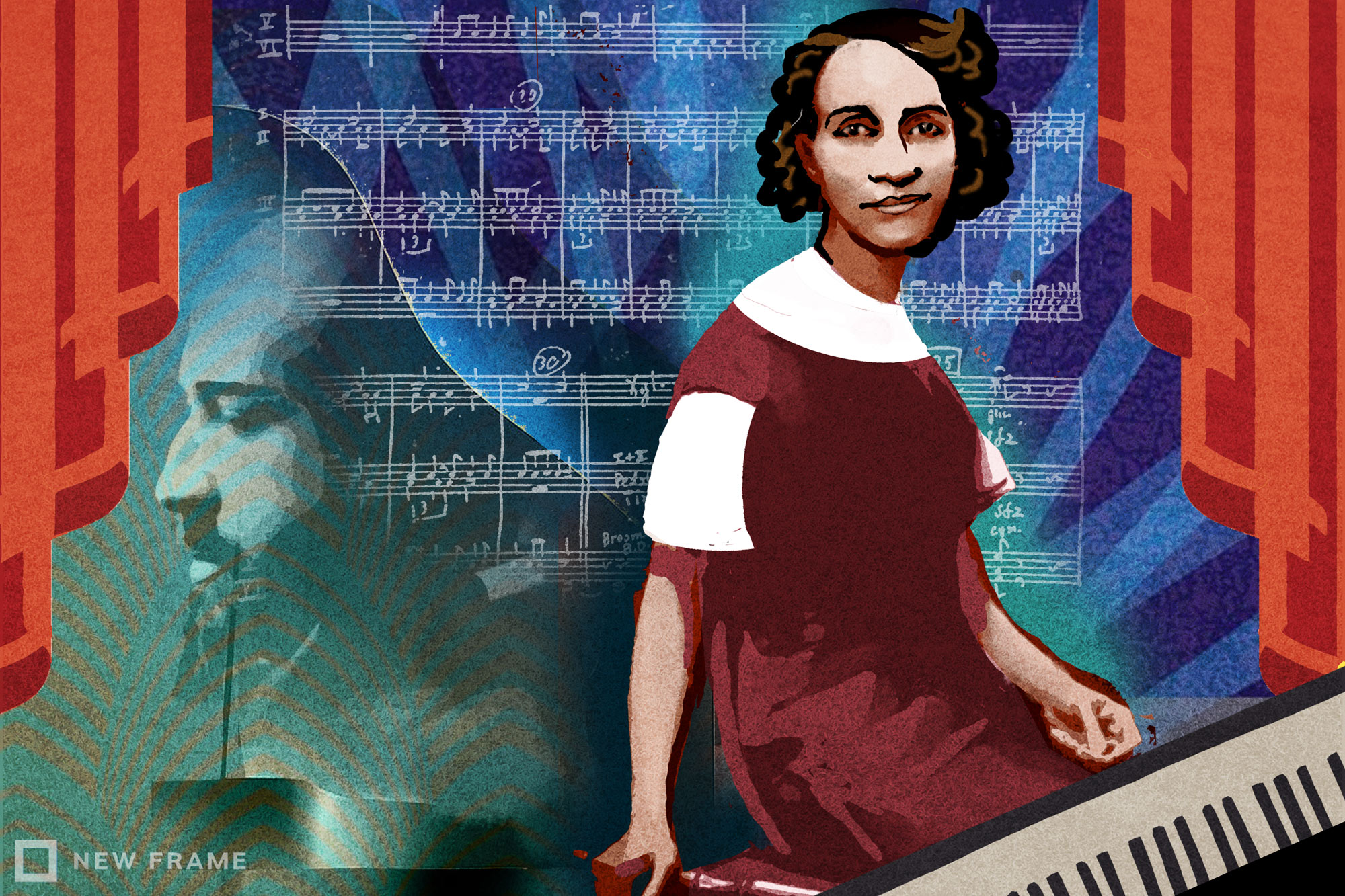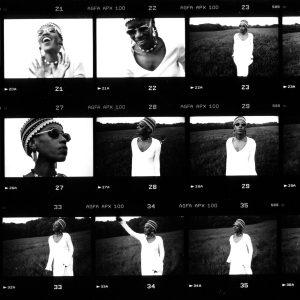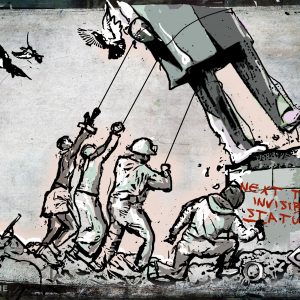‘Tom Tom’ takes its place in the operatic canon
Shirley Graham Du Bois’ ‘lost opera’ tells the diaspora story of African-Americans. Originally performed in 1932, it is being reproduced and restored to its rightful place in history.
Author:
29 June 2020

Erasure is common in classical music. Had it not been for Felix Mendelssohn’s rediscovery of JS Bach’s epic St Matthew Passion in 1823, the world would surely have been robbed of one of the greatest Baroque-era composers. Sometimes, people might simply forget that there once was an important figure at one particular time. And at other times, erasure is purposeful – motivated by the need to centre certain people as authorities on certain subject matter. In these instances, structural power is always at play.
In 2001, Shirley Graham Du Bois’ papers were acquired by Harvard University’s Radcliffe Institute for Advanced Study. This was possible because of the university’s affiliation to her husband, WEB du Bois, Harvard’s first black graduate. It is common knowledge that Graham Du Bois was a musicologist, but until it was found among these papers, the original and complete score for her first opera, Tom Tom: An Epic of Music and the Negro, was thought to have been lost.
According to scholar Sarah Schmalenberger, until recently only Graham Du Bois’ biographer, Gerald Horne, and scholar Katy Perkins illuminated this work. And until the institute’s acquisition, which was co-sponsored by Harvard’s Du Bois Institute for African and African American Research, an abridged version of the composition could be found at the Schomburg Center for Research in Black Culture in New York City. The act of acquiring these papers could have been interpreted as simply bringing the Du Boises’ work under one archive with no real or serious intention to mine through Graham Du Bois’ contributions to music and socialism. After all, she was pigeonholed within the scholarship around her husband’s life and work as the “father of pan-Africanism”.
Related article:
But the efforts of various musicologists, historians and young scholars such as Lucy Caplan have reinvigorated interest in this forgotten work. And rightly so, this generation of scholars is finally bringing the work of women to light. Graham Du Bois’ Tom Tom is now being reproduced and, before the Covid-19 pandemic, was scheduled to be staged in December 2020.
Marrying a towering figure like WEB du Bois can be so overpowering as to overshadow the work of Graham Du Bois and other women like her who are married to prominent men, to the extent that it takes years before we give the same level of attention to women who did work of equal importance.
One can’t help but wonder why efforts by scholars such as Fredara Hadley and Tamika Nunley to repopularise Graham Du Bois’ contributions and have important conversations about the marriage of the arts with intellectual work have only taken place in recent years.
Related article:
As a couple, the Du Boises contributed immensely to pan-Africanism. Indeed, Graham Du Bois paused her work to care for her husband from 1951 until his death in 1953, with travels to Russia, Egypt, Ghana and China in between.
But after WEB’s death, Graham Du Bois served in Ghanaian president Kwame Nkrumah’s government as his adviser from 1963 until its overthrow in 1966. Her work continued when she moved to Cairo, where she was among those who popularised Afrocentric Egyptian historiography, and finally to Beijing, where she died. As for WEB, various disciplines converge on his seminal work The Souls of Black Folk, giving us a clear picture of the sociologist, historian, musician and philosopher that he was.
Of equal – if not more – multidimension is Graham Du Bois, whose training begins with music lessons as a child and exposure to some of classical music’s major composers. Her father’s and brother’s missionary trips to Liberia were also valuable in expanding her palate and these influences. Her love of literature and even the trauma of growing up in a segregated United States were important to producing her forgotten opera.
Tom Tom has only ever been showcased once, even though it premiered to high acclaim. The Cleveland Stadium Opera company performed the opera for more than “25 000 people over two nights” in 1932.
Opera as historical archive
Operas have long been a way to archive history, from the mythical such as Handel’s Messiah to the political such as Bongani Ndodana-Breen’s Winnie the Opera, which is based on the life of Winnie Madikizela-Mandela.
As with the role contemporary artists play, classical composers used their works to inspire revolution. Some of Giuseppe Verdi’s works were important anthems that sounded the call for Italian independence, particularly La Battaglia Di Legnano (1849). In the spirit of this tradition, modernist and 20th-century composers have used opera to tell stories of survival through some of history’s most horrifying events, blending various genres and influences that have transcended musical eras to weave the story together.
One such example is Porgy and Bess, which premiered in 1935. Since its premiere, Porgy and Bess has been hailed as one of the greatest epics of African American history set to music. Composed by the Gershwin brothers, some of its pieces have cemented their place in the American jazz songbook, with songs like I Loves You Porgy and Summertime being reinterpreted by greats such as Nina Simone, Billie Holiday and Ella Fitzgerald. Except, the Gershwins are white men whose interpretation of plantation life reads more like a caricature of black people’s lived reality.
Related article:
The real slap in the face, though, is that black composers struggled for most of their careers to make a name for themselves in opera, which is mostly associated with “white sophistication”. One such person is Scott Joplin, known as the King of Ragtime.
Joplin’s compositions, rooted in some of the ideas that underpin the late romantic to modernist era, are barely mentioned alongside the likes of Bartok or Strauss, whose compositions are structured similarly to reflect the era in which they produced their works. Joplin’s Treemonisha is described as a ragtime opera, deliberately so as to distance the composer from the classical tradition. The same applied for Henry Freeman’s opera Voodoo, one among the 20 he composed, which is retrospectively described as having Wagnerian influences drawn from his encounter with Richard Wagner’s Tannhäuser.
Changes and categorisation
Opera has undergone various changes with each passing era. As a result, Verdi’s work differs from Wagner. When listening to black composers, you hear European influences merged with the musical styles of the time, ragtime included. So to simply call it ragtime and nothing else is to diminish their contributions to classical music. Claude Debussy’s Golliwog’s Cakewalk has never unseated him as an impressionist or late-romantic composer, yet it sounds very similar to Joplin’s Maple Leaf Rag. It is a similar scenario to what contemporary artists experience, where their blackness ends with their catalogue categorised as “urban” even though it may not be, as Tyler the Creator pointed out at this year’s Grammy Awards.
Black composers have had to showcase their work from the margins, building their own opera houses to share their work with audiences. Critiques against Porgy and Bess haven’t been enough to stop this opera from being seen by the mainstream as a quintessential representation of a certain part of American history.
Perhaps what makes this fact tragic for black people interested in musicology and music history is the erasure of black composers from the classical tradition, Joplin included. And for musicologists interested in the work of black women, the tragedy is accentuated by the fact that three years before Porgy and Bess, Graham Du Bois premiered Tom Tom, making her the first black woman composer to do so.
The creation of Tom Tom
As with many prominent composers, Graham Du Bois was exposed to music at a young age, first playing the organ at the American Methodist Episcopal Church her father led. As a young adult, she would earn her living playing the likes of Liszt and Brahms in between writing and lecturing. Income from these various “gigs” would help her finance her first opera.
The road to her first composition begins with her journey to France in 1926, when she enrolled at the Sorbonne in Paris. There, she met a number of fellow students from West Africa and the Caribbean, some of whom were founding members of the Negritude movement.
Related article:
In the biography Race Woman: The Many Lives of Shirley Graham Du Bois, Gerald Horne writes that Paris played an important role for black intellectuals. For African American artists, the city introduced them to an African heritage they had not yet encountered because of how it became something of a capital of the diaspora.
These direct and indirect encounters with African culture play a crucial role in the way Tom Tom is structured and textured. And this is important to note. Composers such as Debussy gained fame by “borrowing” musical styles from the Global South without crediting these influences, as Alex Ross writes. Musical styles from everywhere apart from the West have been taken with little to no credit for how they have influenced classical music.
Graham Du Bois’ epic sees a black woman correcting the classical archive. It is not some fantasy of Africa, it draws from the cultural influences of African people. It’s an ambitious project in which she attempts to include African influences in the canon.
Graham Du Bois’ intellectual contributions
Tom Tom’s appeal was as large as it was because of how personal this story is for much of its audience, some of whom were formerly enslaved. Graham Du Bois’ aim was to view African American history through her lens as an African American woman descended from enslaved people. Her encounters with different forms of music guide this historiography.
Using her encounters with West African students and friends as a student at the Sorbonne in Paris, and her father’s work in Liberia, she used the particular sound of a tom tom drum to indicate where the journey of African Americans began. This starting point speaks to her intentions in telling a story of a life on African soil. Black people often have their histories denied, as if before the arrival of white people there was no real sense that black people had a history outside of their encounters with Europeans.
This intervention indicates Graham Du Bois’ agenda to reconcile African Americans with a culture they did not think they had any ties to. By pointing her audience back to their ancestors’ origin, she attempts to undo any notion that they are a people of no history and no culture, as is often the justification for the savage brutality against black people. She achieves this through the protagonist, Voodoo, deliberately naming him such to symbolise an embodiment of a culture and spiritual practice that has been demonised, much like the very people enslaved. Voodoo is a protector of the imagined African community in the first act.
Related article:
As the opera progresses, in the second act we see Voodoo emerge in 1865, the year slavery ended in the US, as an instigator of slave rebellion. The music changes in sound and rhythm to reflect the music-making of enslaved people to highlight the history of the spirituals, not just as music for music’s sake but as a map of the underground railroad. Voodoo’s role here is that of exposing the hypocrisy of western Christianity in its justifications for the dehumanisation of black people.
The third act sees Voodoo emerge as a symbol of Marcus Garvey’s back-to-Africa ideology against the backdrop of jazz, bringing the story to the point in history when it premiered. The three acts are held together by the classical traditions that define Graham Du Bois’ training as a musicologist and composer. Different time signatures distinguish one period of history from the next and help guide the opera, giving listeners a sense of the temporality of the evolving musical epic.
The point is to illuminate the tragedy of being black in a white supremacist world, of having your identity stripped from you and being commodified for the enrichment of white enslavers. It also highlights the resilience of enslaved Africans from the slavery to Jim Crow eras. It invokes similar intentions as the likes of Verdi’s works aimed at unifying a specific group, but Graham Du Bois’ aim is bridging the gap between Africa and the diaspora. It points to her interest in pan-Africanist debates of that particular time, particularly the Garveyist brand.
Related article:
A secondary story within the play can be interpreted as a reference to the so-called Margaret Garner Incident of 1856, when the enslaved woman Margaret Garner, also named Peggy, killed her children so they wouldn’t grow up to be slaves. This particular history has been referenced in many works by black artists, including Toni Morrison’s novel Beloved. This speaks to the relatability of the work to audiences, by using real histories and even referencing the poetry of Langston Hughes, one of the greatest poets of the Harlem Renaissance era to further locate her piece in the context in which it was premiered.
Tom Tom offers a glimpse into the intellectual contributions Graham Du Bois would make as an artist and activist, among these a biography of Frederick Douglass, novels, founding the magazine Freedomways, whose readership included the likes of Oliver Tambo and Leopold Senghor, and being “the founding director of the Ghana Broadcasting Corporation”.
Correcting the canon
Tom Tom is the first and last opera Graham Du Bois composed. At a Radcliffe institute performance, the American Modern Opera Company’s Davóne Tines posed an important question: “What does it mean to look at possible parts of the canon that aren’t part of the canon?” While scholars do not have one reason they can pin down, hindsight into the times in which Graham Du Bois emerged as a composer can offer a few clues.
The first is the Great Depression, which made access to funding difficult for especially black artists. This is an all too familiar scenario in today’s world, where artists’ livelihoods have taken a hard knock in the wake of the Covid-19 pandemic. Black creatives were so badly hit by the effects of the depression that most theatre companies shut their doors for good. As Horne writes, “African American ‘talent’ was often excluded from the unions and guilds that provided a level of protection for their Euro-American counterparts. Not surprisingly, Graham faced persistent difficulties with producers and theatres.”
Related article:
Economic sacrifices were made in the pursuit of her various lives as a biographer, playwright and musician, writer and lecturer. Graham Du Bois is an example of the multi-careerist nature of a creative’s survival in a world that appreciates art, but not enough to pay artists their worth.
The second possibility is her venture into other forms of creative work, thus abandoning what could’ve been a long career as a classical composer. This may be cited as an additional contributing factor (closely linked to the first) to this work’s disappearance. Women aren’t taken seriously in classical music, least of all black women. Among other reasons, this work’s disappearance is inevitable because of her identity and the times in which it was composed, especially as Graham Du Bois was a communist, as Caplan notes.
Tom Tom’s re-entry offers an opportunity not only to learn about this work and explore the operatic themes in which Graham Du Bois was interested, but it also reinstates a black woman in the tradition of 20th-century classical composers. Above all, it hopefully opens the door to many other hidden works by black composers.







